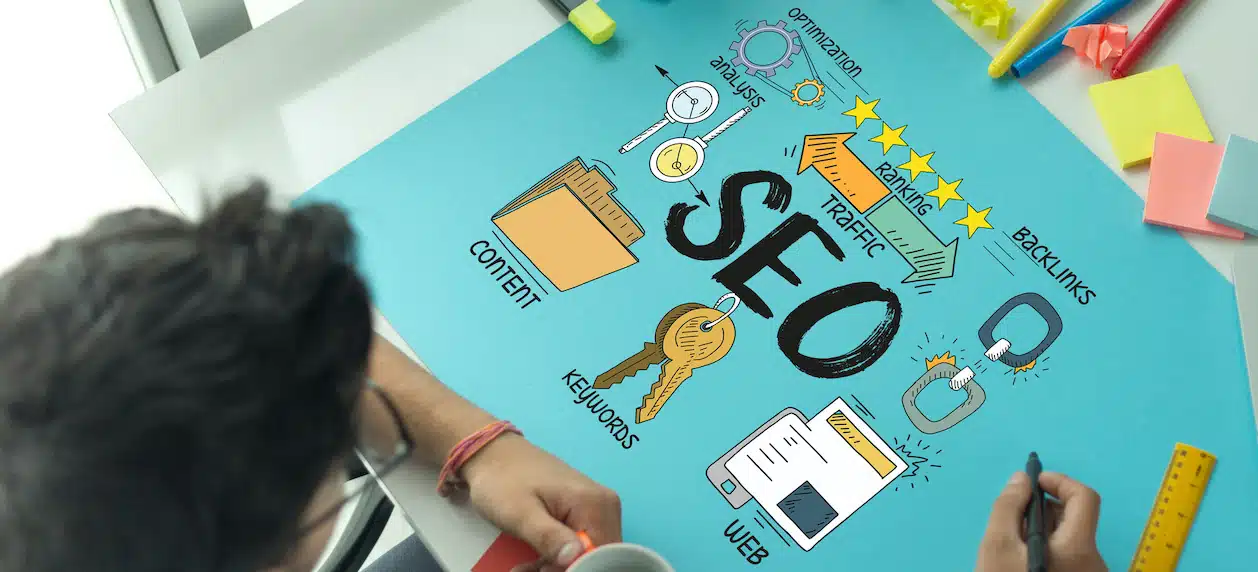
Boost Your SEO: All About Internal Linking Best Practices
Trying to improve your SEO strategy? If so, one thing you should do right away is to take advantage of internal linking best practices.
First things first: What are internal links? In simple terms, an internal link is a link from one page of your website to another one. Internal links make it easier for your site visitors to find the content they’re looking for.
What you may not know is that search engines use internal links to navigate through your site as well. That’s one reason why your link-building structure can have a major impact on your SEO performance.
Not sure how to use internal links effectively? Read on to learn more about our five best practices for internal linking!
Have a Positive User Experience
Search engines do what they can to help their end customer: the searcher. One way they do that is by rewarding a positive user experience (UX).
In a way, this makes your job simple: Be good to your visitors. Don’t hit them with thin content or disruptive interstitials. These things are bad for SEO and will make visitors go back to the search results page.
Also, try to align your conversion goals with your content. Use internal linking to naturally lead customers through the sales cycle. That will give you a much better chance of keeping visitors on your site.
Design and layout are also important parts of the UX picture. Use internal links to make it clear what you do. If your visitors can’t quickly determine whether your site is helpful, they’re going back to Google.
As machine learning advances, internal linking will become more important. Even now, search engines have millions of data points on what users want. If you want those hits, keep your user experience clean.
Link to Your Best Content
At the end of the day, content is what will make or break your website. But having strong content isn’t enough—you also need to link to it.
First, determine what your most valuable content is. That’s the content you want people to find when they search for topics you specialize in. To let Google know about this content, link to it whenever it makes sense.
One way to do that is to add contextual links. Once you write several articles about the same topic, link them with each other. That shows both Google and your users that these articles are topically related.
For instance, let’s say you have a valuable guide about a specific trend. If you link to that article from other posts relevant to this trend, you tell Google that this guide is important. That, in turn, makes Google rank it higher.
Have a Solid Website Structure
Think of your website as a pyramid. Your homepage is on the top, your main categories are under it, and your best content is a bit further down.
In other words, don’t be afraid to make visitors scroll and click. Back in the day, you had to have a single page per keyword for SEO to work. These days, you can structure your content in a much more natural way.
Why is it so important to have the right website structure? For starters, organizing your content gives you topical authority. It also helps you figure out which keywords you should focus on and where to link to them.
Of course, not everything can fit on your home page or in the top navigation. That’s where internal linking best practices for SEO come in. With a sound strategy, you can have every part of your site available in a few clicks.
Keep an Eye on Your Link Value
Link value is a ranking factor based on the idea that links pass value from one page to another. That’s true for both external and internal links.
Not that long ago, Google PageRank made it easy to determine link value. You could take any page on your site and see how much value it has. That allowed us to manage our links to push PageRank into key areas.
Though we can’t see PR scores anymore, link value is as important as ever. If you know where inbound links land on your site, it’s easier to set up your site structure. You can still get these metrics via some SEO tools.
Keep in mind that Google divides link value between all links on a page. Since your homepage has the most backlinks, it will have the best PageRank value. All links found on the homepage share that PageRank value and pass it on.
That’s why your newest blog posts get more link value if you link to them from the homepage. The more you link to that post, the more valuable it becomes. Make sure your most valuable content has good link value.
Make Navigation Crawlable
No matter how good your linking strategy is, your navigation needs to match it. The main goal is to help visitors navigate to your content more easily.
To do that, you need to make Google understand the linking association between your pages. Without doing so, your site will seem flat and shallow even if do your best to create quality content.
What you want to do is make navigation as crawlable as possible. Each page should only have primary and sub-navigation coded into it. Anything more than that will waste your crawl budget and focus.
Also, try to create a linear path through your pages. That helps search engines see all the content in your topical areas. With a focused linking strategy, you should be able to get crawlers to any pages you want.
Follow These Internal Linking Best Practices
Like anything else, internal linking best practices will change over time. Still, making the most of them right now can bring you a big SEO boost. Follow the above tips to create the best internal linking strategy for your needs.
Not sure how to optimize internal linking for your website? Our team of SEO professionals can help you come up with the perfect strategy! Contact us right here and we’ll get back to you as soon as possible.


